Architectural pyramids celebrate humans and nature in Mexico
An architectural pyramid complex in Mexico's Guanajuato region by 3ME Arquitectura celebrates the relationship between humans and nature
Luis Young - Photography
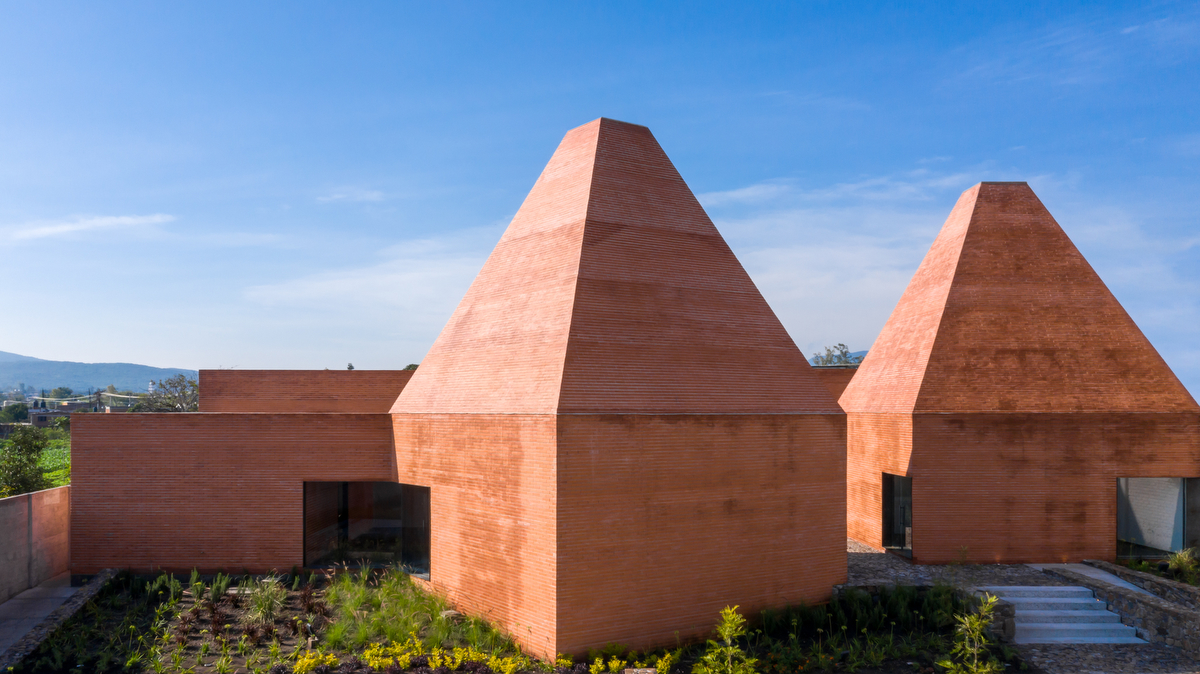
Two large, terracotta-coloured architectural pyramids stand out among the green fields on the edge of the central Mexican city of Salvatierra. They belong to a complex called Módulo de Riego (Spanish for ‘irrigation module’), which forms the headquarters of the local Association of Agricultural Producers. Conceived as a cultural centre to celebrate balance and sustainability between humans and nature, while promoting the Guanajuato region's economy, produce, and connection with the land, the dramatic architecture is the brainchild of emerging architecture studio 3ME Arquitectura.
‘The organisation seeks to provide certainty to crop production by generating jobs and agricultural products, strengthening an interest in the land, and reaffirming identity in a conscious attempt to curb migration,' explain the architects, who looked at the region's agricultural building typologies and traditional hacienda structures for inspiration.
Enter the two large pyramidal volumes that frame the entrance to the site. ‘They are reminiscent of old grain silos that are scattered throughout the surrounding countryside, and give the building a sense of agricultural scale and meaning,' says the team.

Walking through the pyramids, visitors enter a large open courtyard, which is carefully paved and planted. A path leads into the various structures around it, containing space for offices, a training room, auditorium, reception area and product display, as well as ample on-site parking. Inside the pyramids, tall, white geometric halls provide flexible exhibition areas and multifunctional facilities for the community.
Working with familiar shapes and typologies, and memory and experience of the link between humans and nature, the architects also infused their design with contemporary references. Its strong shapes recall the Jesuit chimneys of Mineral de Pozos, a small town in Guanajuato; the drawings of Sigurd Lewererentz for an unbuilt crematorium in Malmo, Sweden; and the pyramidal structures of the Museo Casa das Histórias de Souto de Moura in Portugal.
The team hopes this centre will help revitalise the strong links this region has to agriculture. ‘It is only through the experience of the space that we rediscover the value of the utilitarian and vernacular buildings characteristic of this territory,' say the architects.

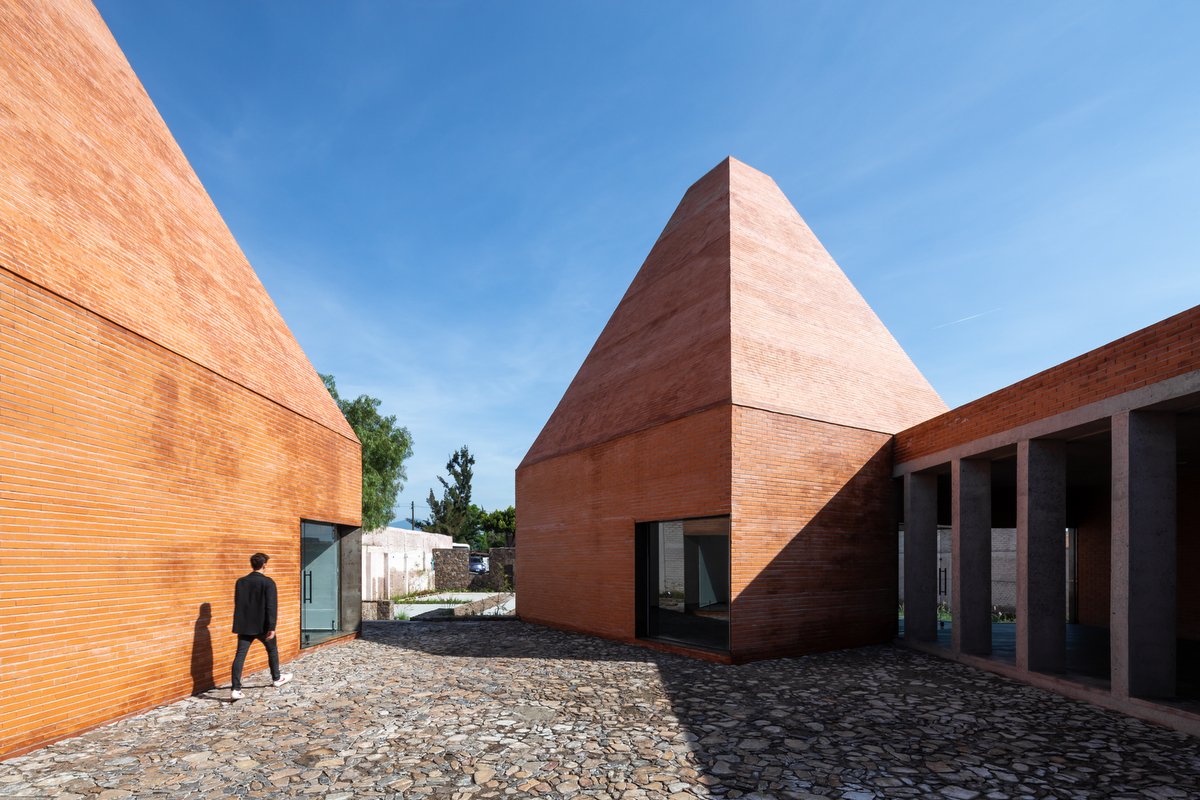
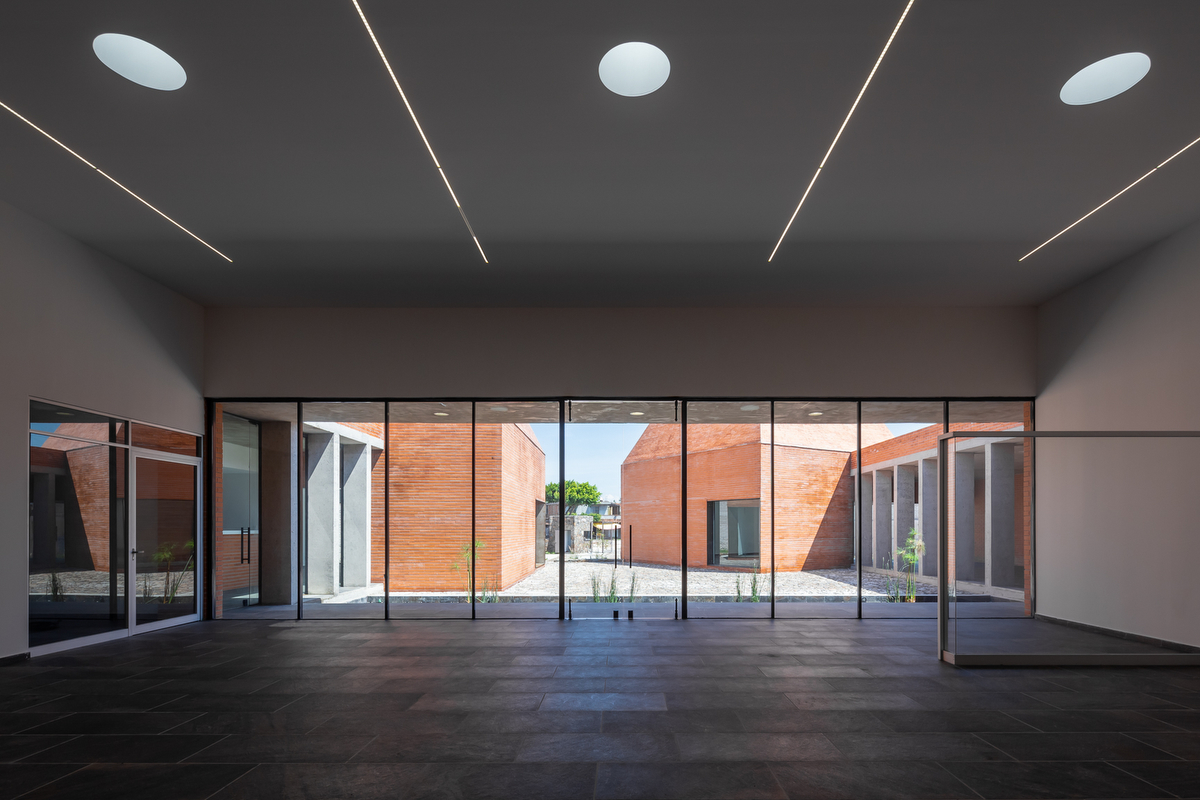
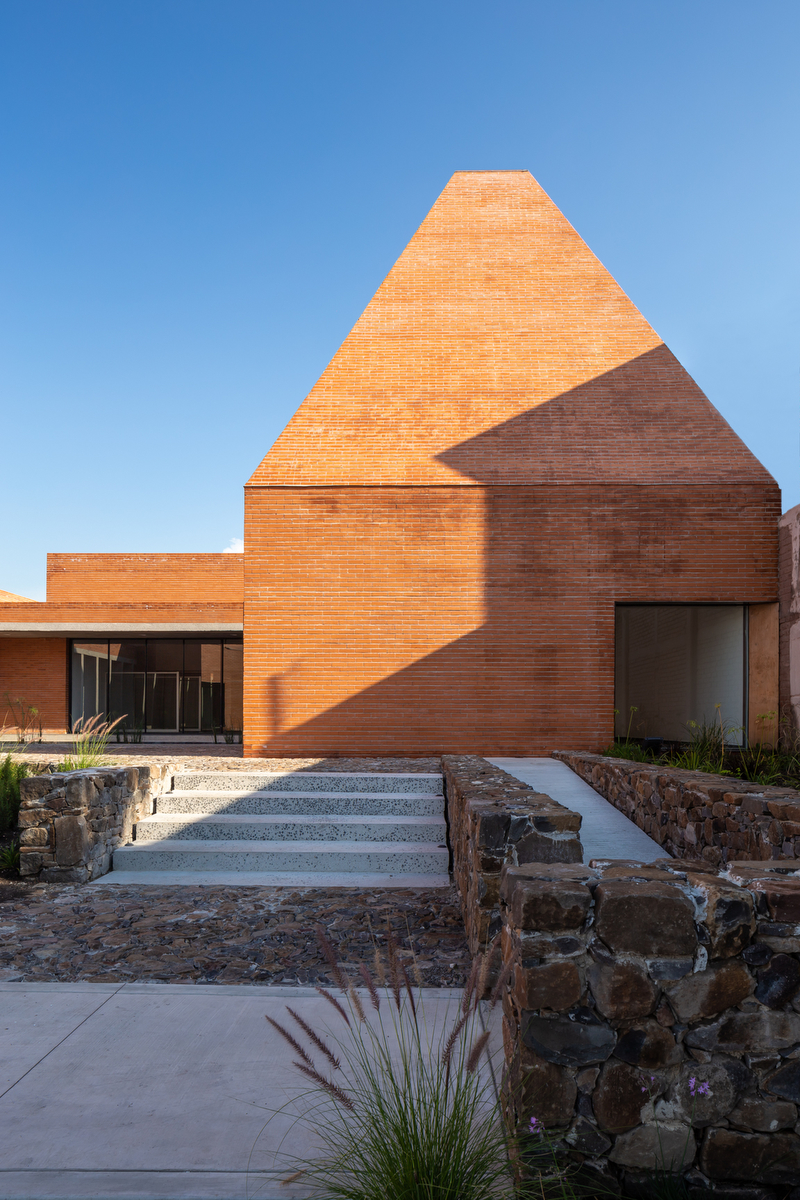
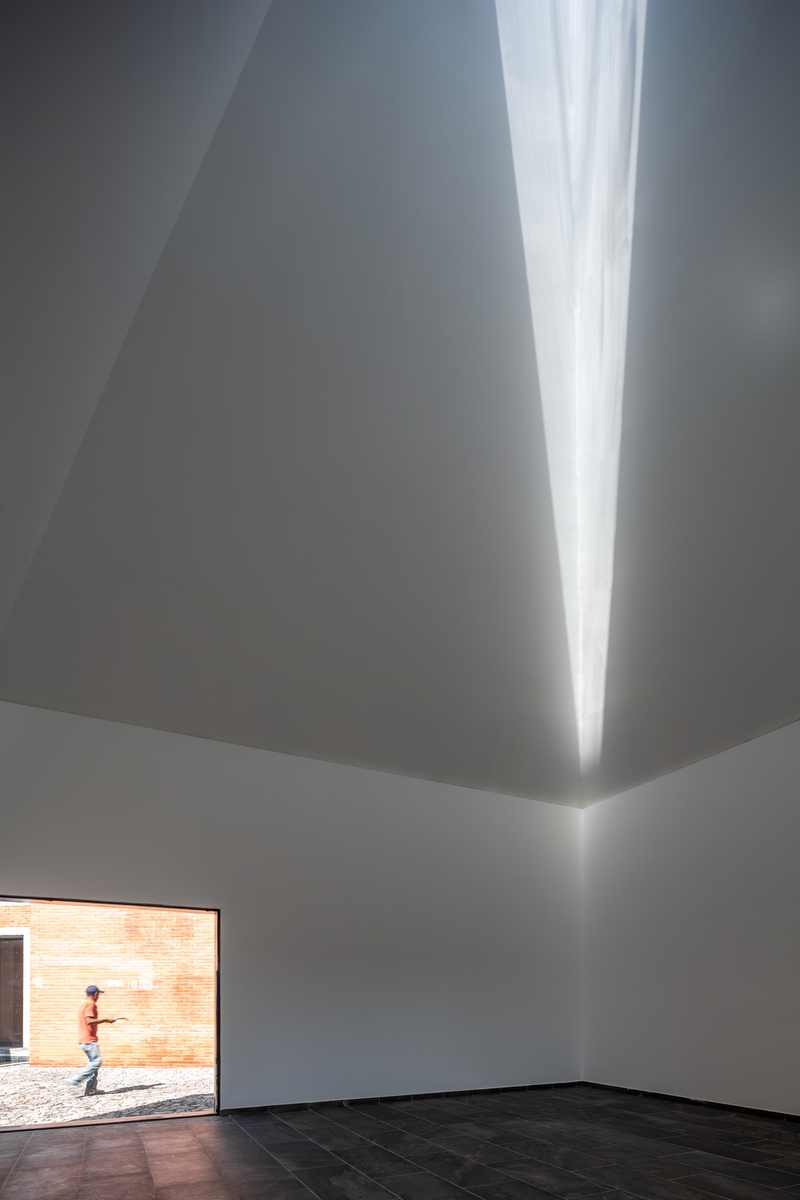
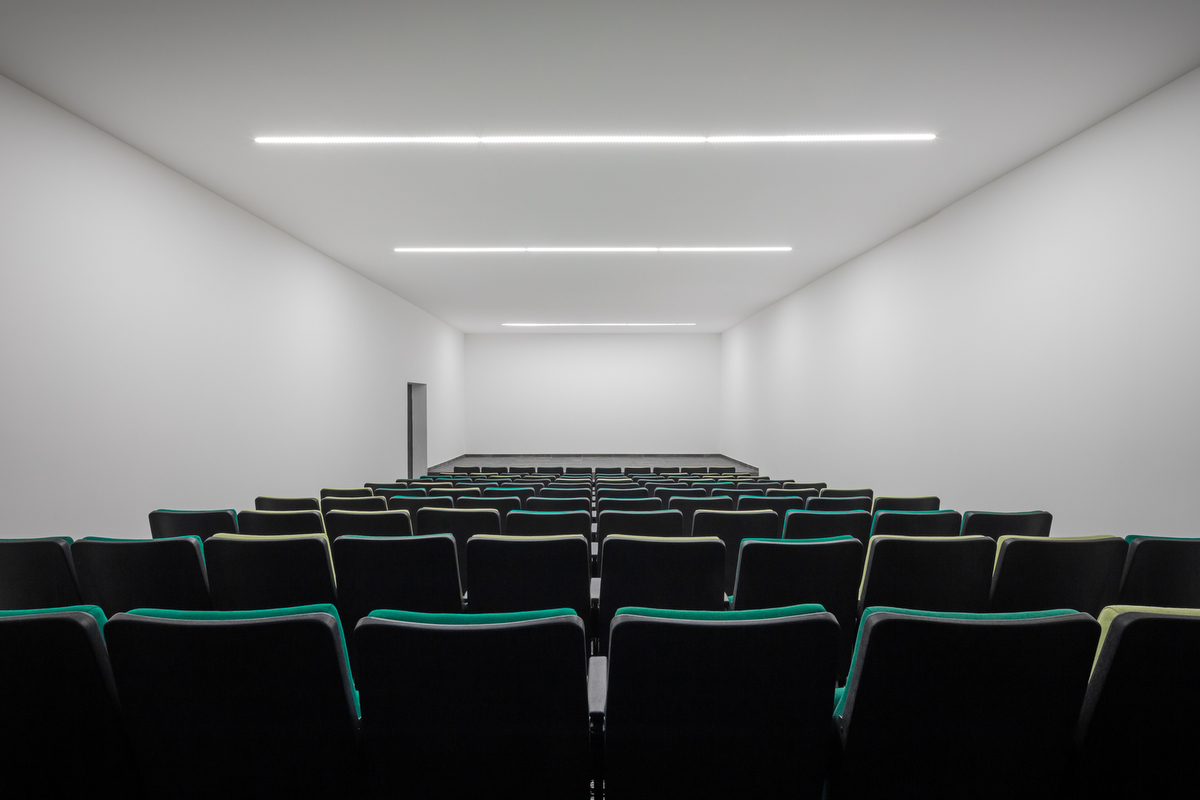
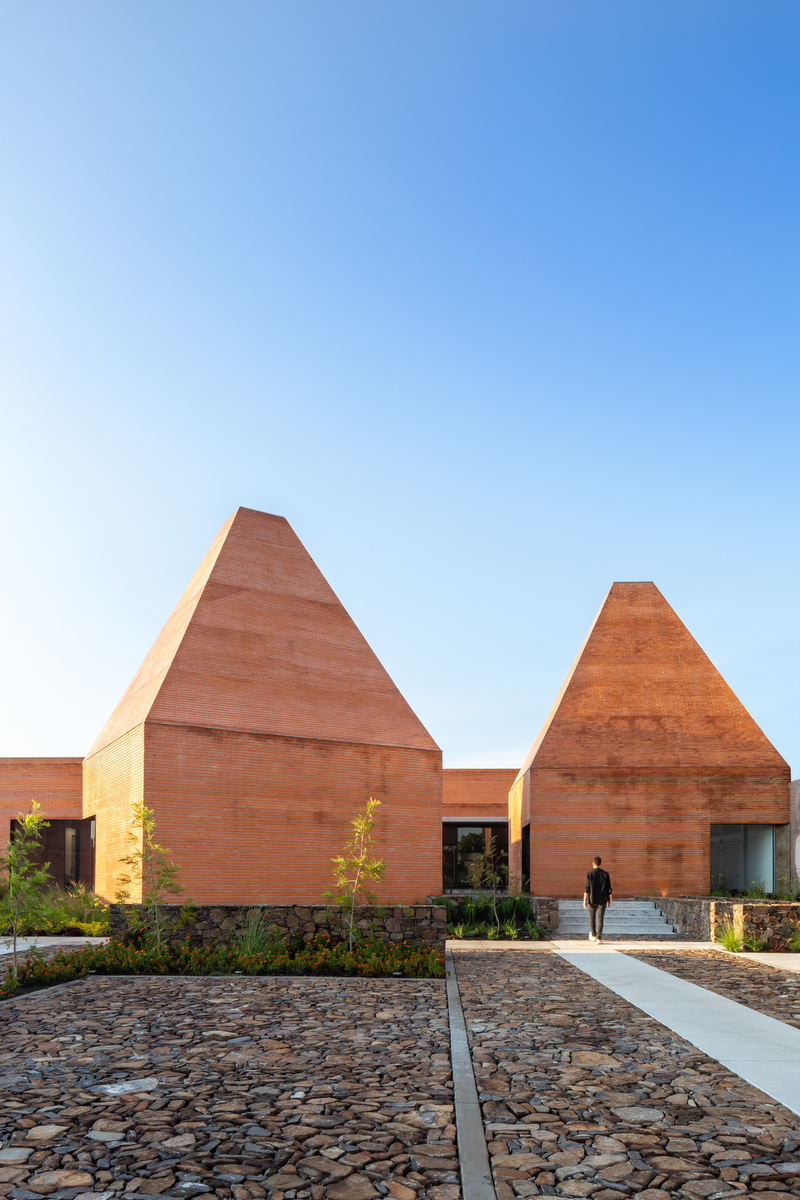
INFORMATION
Receive our daily digest of inspiration, escapism and design stories from around the world direct to your inbox.
Ellie Stathaki is the Architecture & Environment Director at Wallpaper*. She trained as an architect at the Aristotle University of Thessaloniki in Greece and studied architectural history at the Bartlett in London. Now an established journalist, she has been a member of the Wallpaper* team since 2006, visiting buildings across the globe and interviewing leading architects such as Tadao Ando and Rem Koolhaas. Ellie has also taken part in judging panels, moderated events, curated shows and contributed in books, such as The Contemporary House (Thames & Hudson, 2018), Glenn Sestig Architecture Diary (2020) and House London (2022).
-
 Terrified to get inked? This inviting Brooklyn tattoo parlour is for people who are 'a little bit nervous'
Terrified to get inked? This inviting Brooklyn tattoo parlour is for people who are 'a little bit nervous'With minty-green walls and an option to 'call mom', Tiny Zaps' Williamsburg location was designed to tame jitters
-
 Let’s hear it for the Chopard L.U.C Grand Strike chiming watch
Let’s hear it for the Chopard L.U.C Grand Strike chiming watchThe Swiss watchmaker’s most complicated timepiece to date features an innovative approach to producing a crystal-clear sound
-
 Form... and flavour? The best design-led restaurant debuts of 2025
Form... and flavour? The best design-led restaurant debuts of 2025A Wallpaper* edit of the restaurant interiors that shaped how we ate, gathered and lingered this year
-
 These Guadalajara architects mix modernism with traditional local materials and craft
These Guadalajara architects mix modernism with traditional local materials and craftGuadalajara architects Laura Barba and Luis Aurelio of Barbapiña Arquitectos design drawing on the past to imagine the future
-
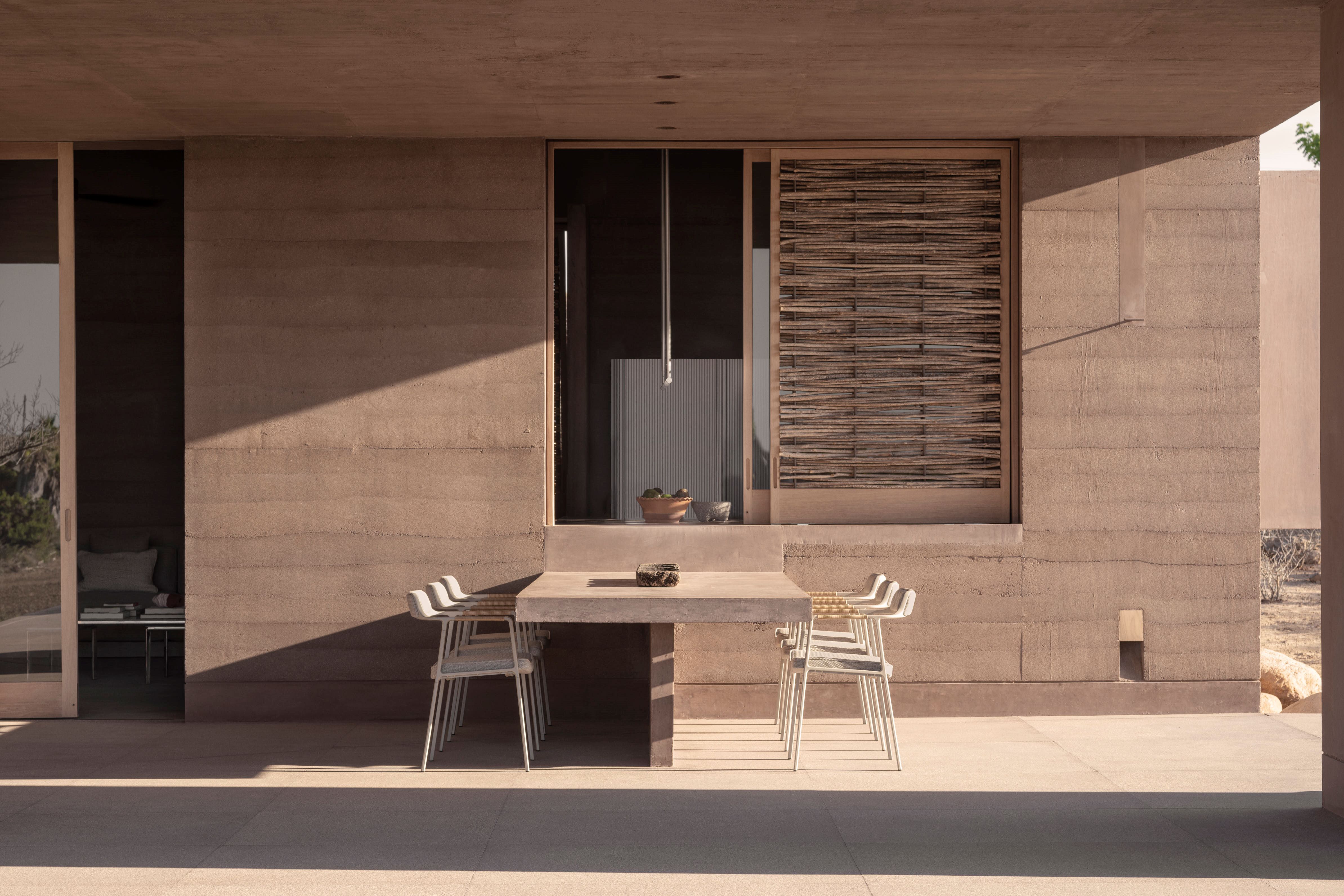 This Mexican architecture studio has a surprising creative process
This Mexican architecture studio has a surprising creative processThe architects at young practice Pérez Palacios Arquitectos Asociados (PPAA) often begin each design by writing out their intentions, ideas and the emotions they want the architecture to evoke
-
 The architecture of Mexico's RA! draws on cinematic qualities and emotion
The architecture of Mexico's RA! draws on cinematic qualities and emotionRA! was founded by Cristóbal Ramírez de Aguilar, Pedro Ramírez de Aguilar and Santiago Sierra, as a multifaceted architecture practice in Mexico City, mixing a cross-disciplinary approach and a constant exchange of ideas
-
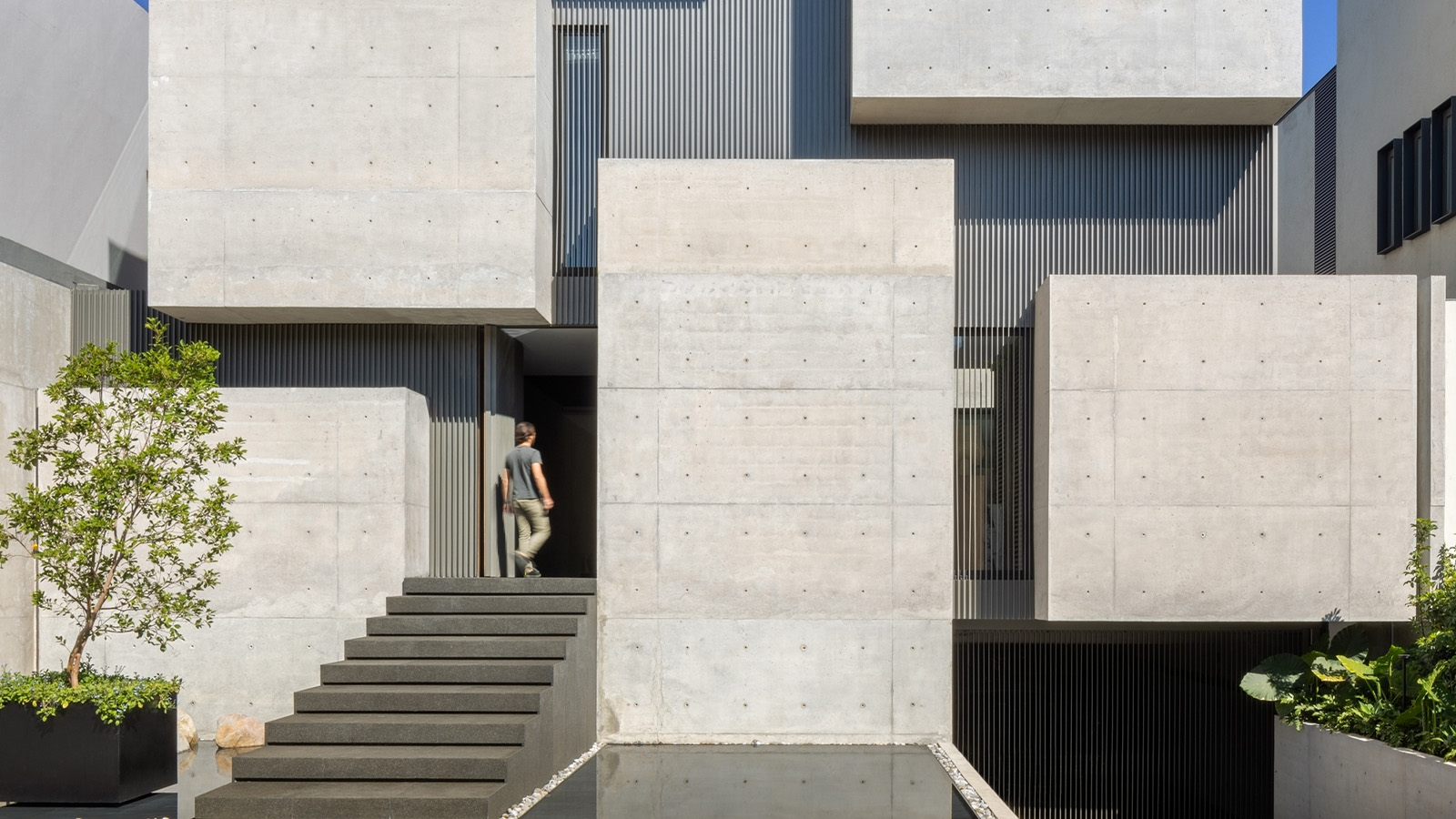 A cubist house rises in Mexico City, its concrete volumes providing a bold urban refuge
A cubist house rises in Mexico City, its concrete volumes providing a bold urban refugeCasa Ailes, a cubist house by Jaime Guzmán Creative Group, is rich in architectural expression that mimics the dramatic and inviting nature of a museum
-
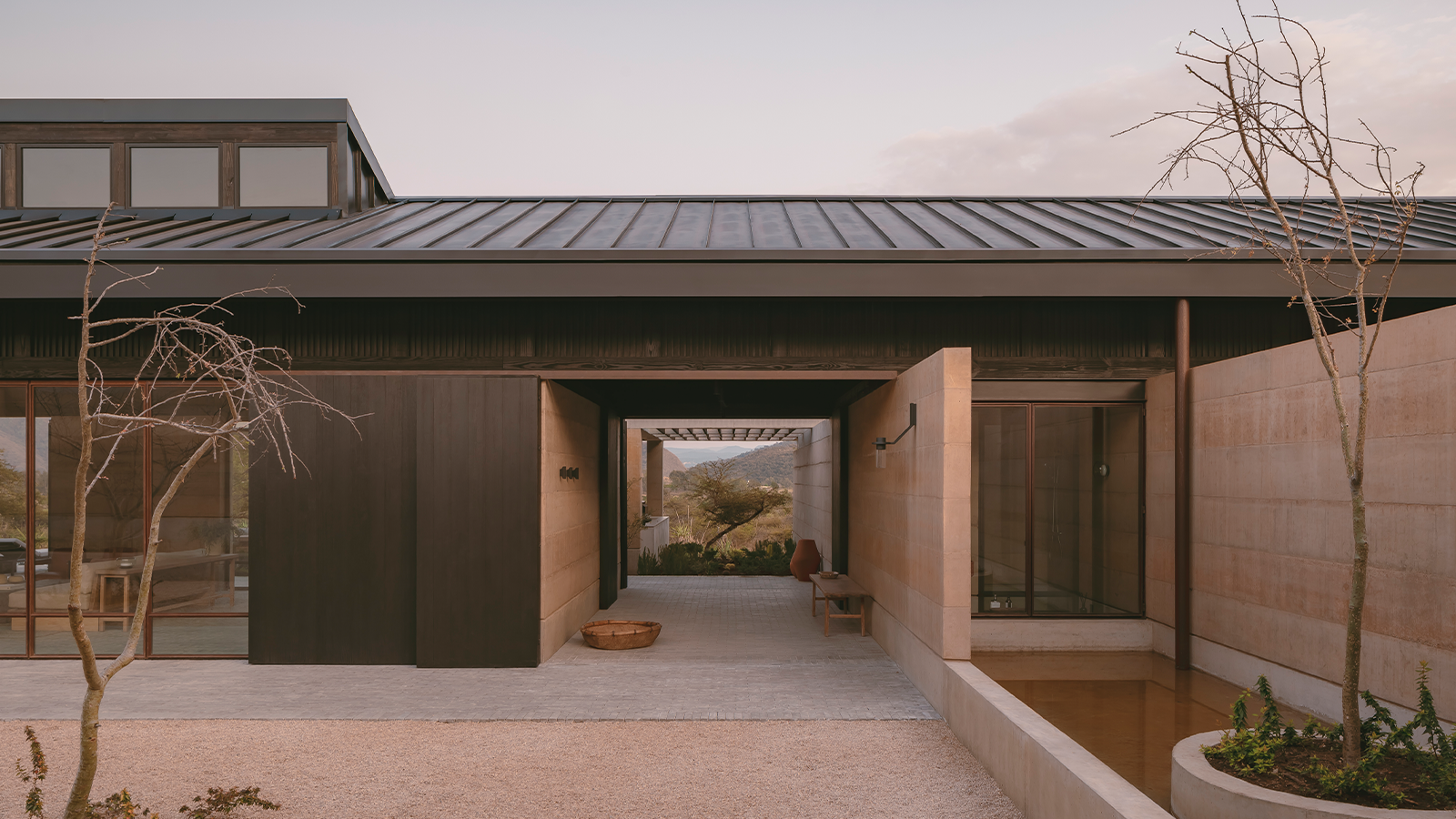 Serenity radiates through this Mexican home, set between two ravines
Serenity radiates through this Mexican home, set between two ravinesOn the cusp of a lakeside town, Mexican home Casa el Espino is a single-storey residence by Soler Orozco Arquitectos (SOA)
-
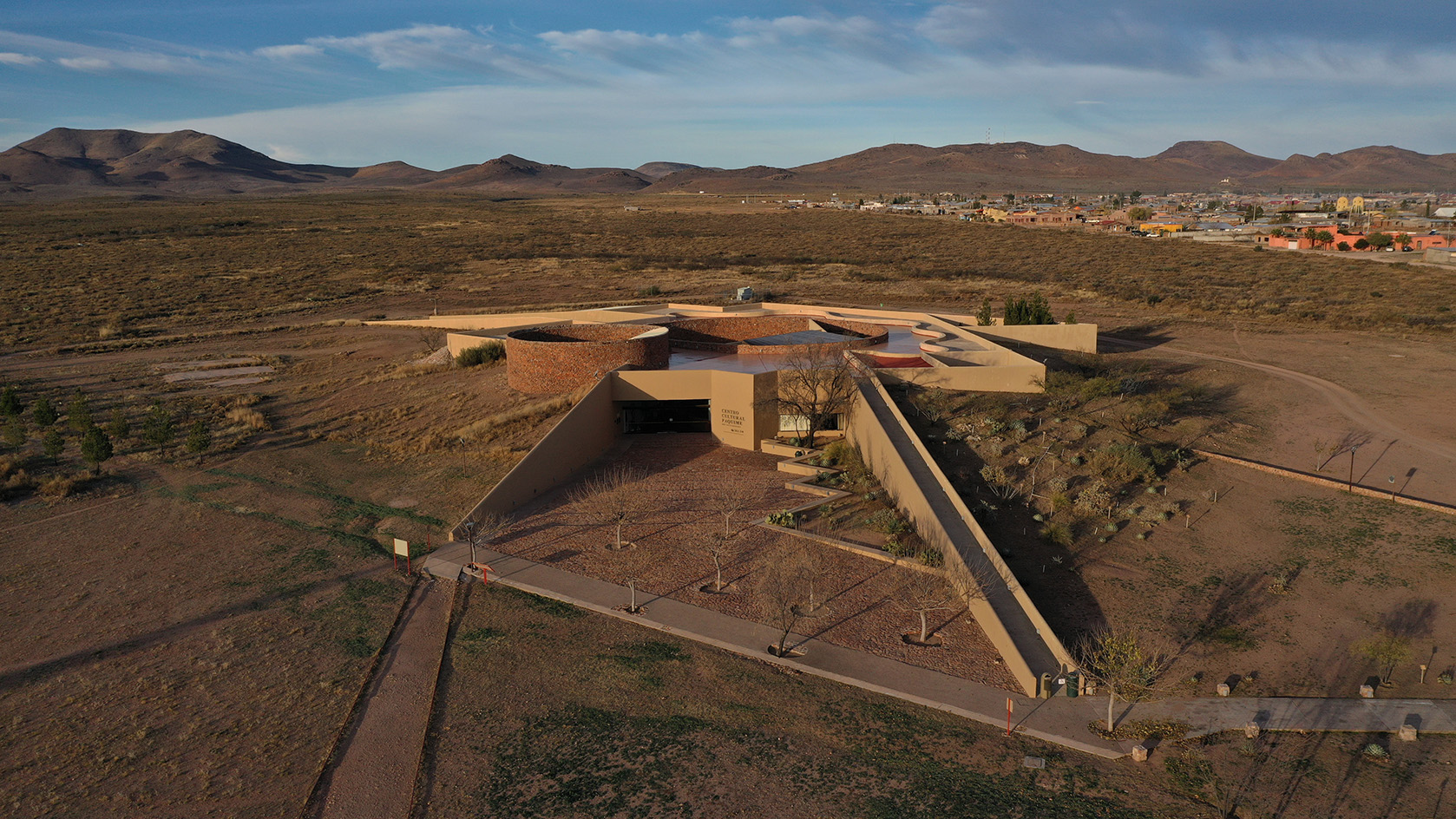 Mexican landscape architect Mario Schjetnan's Grupo de Diseño wins 2025 Oberlander Prize
Mexican landscape architect Mario Schjetnan's Grupo de Diseño wins 2025 Oberlander PrizeThe 2025 Oberlander Prize goes to Mexican landscape architect Mario Schjetnan and his studio, Grupo de Diseño, highlighting the creative's motto: 'We have a human right to open space'
-
 The Architecture Edit: Wallpaper’s houses of the month
The Architecture Edit: Wallpaper’s houses of the monthThis September, Wallpaper highlighted a striking mix of architecture – from iconic modernist homes newly up for sale to the dramatic transformation of a crumbling Scottish cottage. These are the projects that caught our eye
-
 A Mexican clifftop retreat offers both drama, and a sense of place
A Mexican clifftop retreat offers both drama, and a sense of placeCasa Piscina del cielo, a clifftop retreat by Zozaya Arquitectos, creates the perfect blend of drama and cosiness on Mexico's Pacific Coast